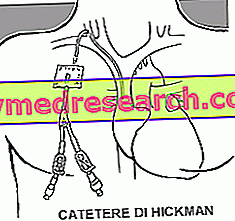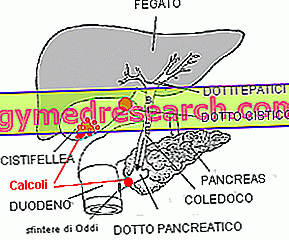Generality
The rigid hallux is a degenerative disease affecting the joint located at the base of the first toe (toe).

The disorder is supported by an arthrosic process that causes a progressive reduction in the mobility of the big toe, which is no longer able to flex and extend. The rigid hallux is also associated with pain during walking, swelling and formation of osteophytes between the head of the first metatarsal and the base of the proximal phalanx.
The predisposing factors can be multiple and include traumas (acute or chronic), some systemic diseases (gout, rheumatoid arthritis etc.) and anatomical conformation of the foot .
Depending on the stage of degeneration, different solutions for the treatment of rigid hallux may be indicated to patients.
What's this
The rigid hallux is a pathological process affecting the metatarsophalangeal joint that connects the proximal phalanx of the first toe with the head of the first metatarsal bone.
In this clinical picture, the big toe appears with the tip raised and hyper-extended . The stiff toe also causes the appearance of a very painful swelling that develops dorsally to the joint. Joint stiffness can prevent the physiological movement of the big toe upwards, as well as limiting the simplest gestures, such as wearing shoes.
Metatarsal-phalangeal joint: outline of anatomy
- The toes are formed by a series of bones called phalanges . These are arranged in a row between them (in the big toe two phalanges are present, while in the other toes there are three).
- The first phalanx of each finger is articulated with a bone positioned immediately before, called the metatarsal . Each foot has 5 metatarsal bones (one per finger).
- Between each metatarsal bone and the corresponding phalanx is the metatarsophalangeal joint, enclosed in its own joint capsule. This structure allows the bones to slide smoothly over one another during movements. If the articular surfaces become irregular, however, friction is created. The phenomenon predisposes to the progressive disappearance of the cartilage.
- The rigid hallux is, therefore, a pathology affecting the metatarsophalangeal joint located at the base of the big toe, that is, between the head of the first metatarsal bone and the base of the first proximal phalanx.
Causes
The rigid hallux is the result of an arthrosic process affecting the first metatarsophalangeal joint.

In this regard, it should be remembered that arthrosis refers to a degenerative disease characterized by a progressive thinning of the articular cartilages, which are replaced by the generalized formation of new bone tissue. In the rigid hallux, this proliferation is associated with the development of osteophytes that are arranged above the back of the finger, causing a net reduction in finger movements during walking, as well as friction against the shoe.
As the pathological process progresses, pain and partial or total limitation of joint movements arise, sometimes to the point of completely blocking the joint ( ankylosis ). For this reason, the hard bump is also called Hallux limitus or flexus .
The rigid hallux mainly affects male subjects, aged between 30 and 60 years.
Primary and secondary hallux
When the pathology is established for no apparent reason ( idiopathic cause), it is defined as a primary rigid hallux . This condition is distinguished from the secondary rigid hallux, which mainly recognizes traumatic or post-surgical causes.
Did you know that…
The rigid hallux is a clinical condition similar to hallux valgus (deformity whereby the big toe appears deviated laterally, towards the other toes). Both these pathologies are characterized, in fact, by the swelling and the presence of pain at the base of the first toe.
However, in the hallux valgus a deviation of the first finger is observed which tends to approach the lateral fingers, while the rigid big toe identifies only arthrosis of the first metatarsophalangeal joint, without necessarily having a lateral deviation of the finger.
The hallux valgus also recognizes causes, consequences and therapeutic solutions different from those of the rigid hallux.
Predisposing or aggravating factors
The rigid hallux recognizes a series of factors capable of playing a role, alone or in association, in the pathogenesis of this disease. In particular, the condition may represent the consequence of various irritative and / or inflammatory processes of a biomechanical, systemic or congenital nature .
- Stiff toe can arise as a result of small traumas (microtraumas), repeated over time: when articular cartilage is damaged, the onset of an arthrosic process can be promoted. In this case, the habit of wearing certain shoes and the practice of some sports exposes you to a greater risk of developing the pathology: football, ballet, sport climbing, rugby etc.
- The rigid hallux is frequently found as a surgical outcome of interventions that lead, in some way, an excessively prolonged immobilization of the joint. An example of an intervention that can result in this foot disease is that aimed at the treatment of hallux valgus. Excessive fibrosis and post-surgical infection are other occurrences that can result in the big toe.
- When it appears at a young age (usually during adolescence), the pathology may depend instead on a congenital predisposition . The rigid hallux can be favored, in particular, by particular anatomical-structural factors, such as, for example, a head of the first flattened or squared metatarsal bone, which determine an abnormal overload of the anterior part of the foot, that is they lead to restart in a unbalanced the stresses generated during the journey.
- The causes of rigid hallux also include some metabolic systemic diseases (eg gout) and inflammatory diseases (eg rheumatoid arthritis).
Other factors that can predispose to the onset of rigid hallux are:
- Cartilage aging (early or natural);
- Acute trauma (eg fracture or dislocations affecting the bones that make up the first metatarsal-phalangeal joint);
- Psoriatic arthritis;
- Osteochondritis.
Symptoms and Complications
The symptoms of rigid hallux can vary from joint stiffness to real acute pain at the first metatarsophalangeal joint. Usually, the first toe is very painful in the morning or after some physical activities, even modest (for example: a walk).
Pain at rest indicates a progression of the disease and can be associated with swelling and joint inflammation, often complicated by osteophytes . This occurs with the subcutaneous protrusion of the newly formed bone, which causes conflict and rubbing inside the shoe.
In the most advanced stage of the rigid hallux, the joint can be completely compromised and even the simplest gestures are difficult, such as putting on shoes or taking a few steps.
Associated disorders
- The pain associated with the hard toe causes the patient to walk, weighing the weight of the body on the outer edge of the sole of the foot. This predisposes to the onset of painful redness, calluses and calluses near the other toes, redness of the fifth metatarsal and tendonitis of the peroneal or bursitis.
- As the disease progresses, involvement may also occur at a distance such as low back pain and knee pain .
- Inflammation and subsequent fibrotic degeneration of the metatarsophalangeal joint can also involve neighboring structures, such as the interdigital nerve, resulting in Morton's neuroma .
Diagnosis
The rigid hallux is traditionally evaluated with the examination of the foot, through palpation, observation of the joint deformity and the mobilization of the first metatarsophalangeal joint. If the pathology has been established, the big toe presents a limited or even zero range of movement.
Confirmation can be provided by radiographic examination, which also allows to establish which are the degree and extent of the degenerative process. In some cases, it may be useful to perform CT or MRI scans.
Treatment
Depending on the symptomatology and the stage of degeneration of the metatarsophalangeal joint, the solutions for the treatment of the rigid hallux indicated to the patients may be different. In any case, the goal is to reduce the inflammatory and degenerative process underlying the disease.
Drugs and physical therapies
In cases where the big toe is mild, the use of topical anti-inflammatory drugs (creams, ointments, etc.) or intra-articular drugs (cortisone infiltrations) may be sufficient to reduce the pain and inflammation present in the joint. The effects can be satisfying, but it is logical to expect that the improvement in symptoms will be only temporary.
Alternatively, it is possible to evaluate a physiotherapy intervention aimed at the mobilization of the metatarsophalangeal joint and the reduction of pain. Conservative treatment may also include the use of physical therapies, such as tecar therapy or laser.
Footwear and orthotic means
If the rigid hallux is accompanied by pain, the reduction of the extension forces of the metatarsophalangeal joint obtained with the choice of appropriate footwear may be useful.
The shoes must be, in particular, sufficiently wide and comfortable not to create conflict and constriction in the region of the big toe. The increase in the rigidity of the sole, even with inserts, custom-made insoles with suitable drains and suitable insoles, can lead to the reduction of symptoms.
Sometimes, MBT-type shoes (ie rocking) are indicated, as they allow the movement of the first metatarsophalangeal joint during walking to be reduced.
Surgery
If conservative measures are no longer sufficient for the management of stiff hallux, the doctor can indicate the most appropriate surgical strategy based on the degree of severity of the disease. The aim is to eliminate the pain and to return the movement of the joint.
In less severe forms of rigid hallux, the orthopedist can perform a minimally invasive percutaneous technique for decompression of the joint capsule and removal of metatarsal and phalanx osteophytes. The intervention, called cheilectomy, involves an increase in the range of motion and a related decrease in pain. However, the results rarely remain constant over time, as the evolution of the arthrosic process is not countered in any way. In less severe cases, metatarsal osteotomies can also be used, able to remove exuberant bony parts to improve the joint mechanics of the big toe.
If joint stiffness is greater, however, hemiarthroplasty (replacement of only one of the two components of the joint) and arthroplasty (complete joint reconstruction, with replacement of both worn components) can be performed.
In more severe cases of rigid hallux, metatarsophalangeal arthrodesis may be proposed. This procedure determines the bony fusion of the two articular components (that is of the metatarsal bone with the first phalanx), allowing the disappearance of the pain, but actually preventing the movement of the big toe.
Alternatively, surgery is performed to replace the joint with an artificial prosthesis ( arthroplasty ). Also this method aimed at treating stiff hallux has the objective of eliminating or reducing pain, allowing a certain mobility and a sufficient articulation to wear normal shoes.


